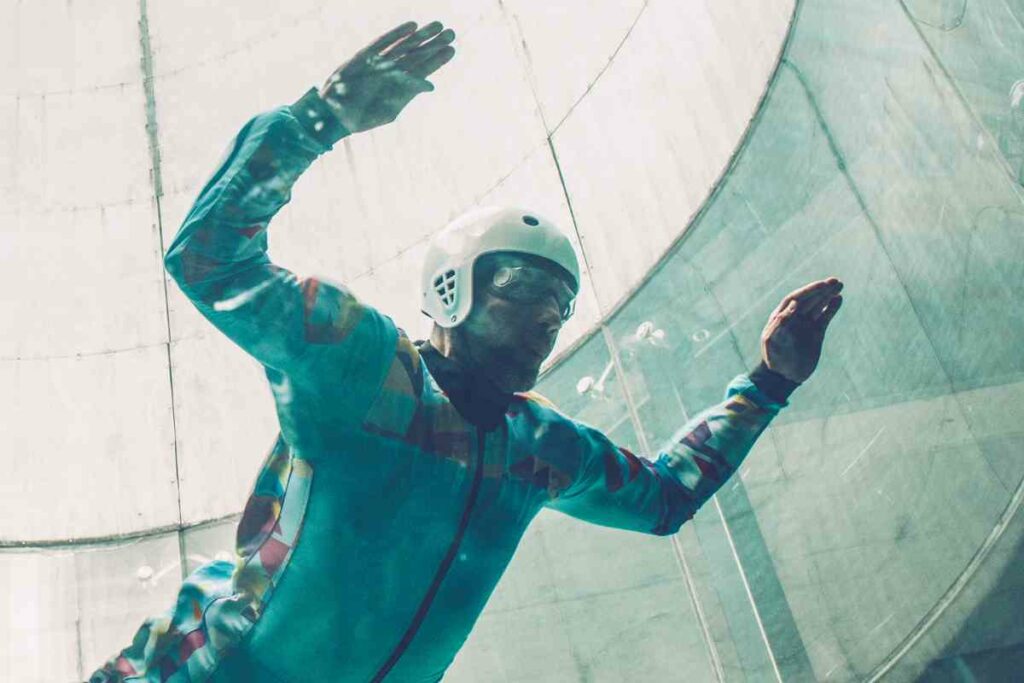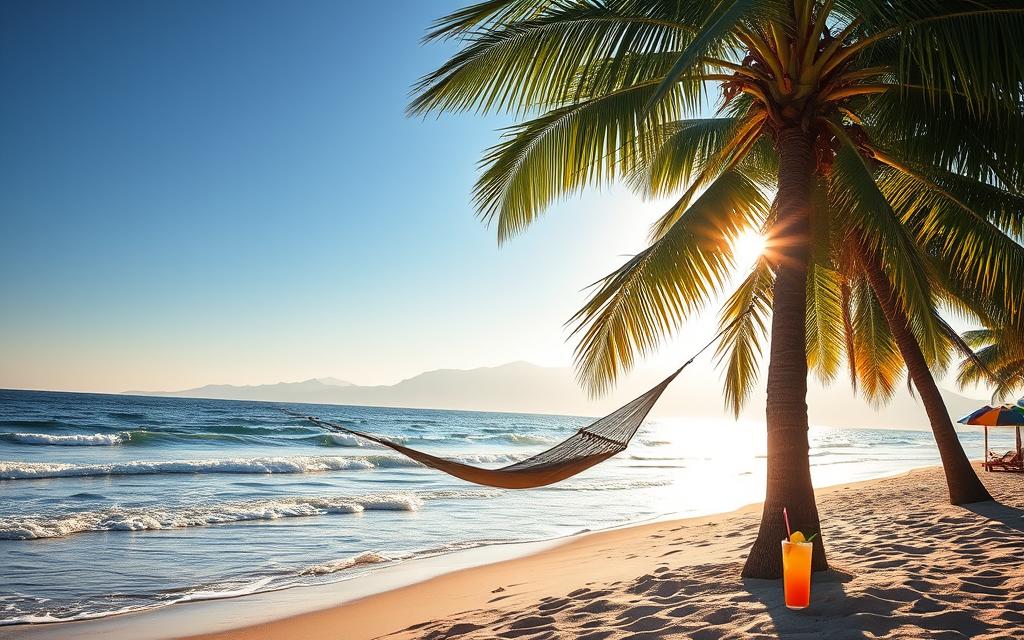Skydiving can get your heart rate racing and the adrenaline pumping, but that’s all part of the fun!
But if jumping out of an aircraft at 10,000 ft. and falling through the sky at 120mph doesn’t sound like your idea of fun, consider indoor skydiving.
Indoor Skydiving: The Next Best Alternative to Actual Skydiving
If you think about it, there is nothing ordinary about jumping out of a moving airplane more than two miles above the Earth.
Skydiving is a scary and insane experience. But for many, the adrenaline rush is the main selling point.

This adrenaline-pumping adventure produces an endorphin boost that may last for days.
But what if you are uncomfortable with the risks of jumping out of an aircraft? Can you still experience the thrill of skydiving?
The answer is yes. Indoor skydiving is your next best option if you are unprepared to jump out of a moving aircraft.
Learn more about this exhilarating adventure in the following sections.
Read before you go – Can You Indoor Skydive If You Have a Medical Condition?
Facts About Indoor Skydiving
Before you go indoor skydiving, it helps to understand the concept. So, what exactly is indoor skydiving?
Here are a few facts about indoor skydiving to help you know what it’s all about:
- Indoor skydiving uses a vertical wind tunnel to create a strong stream of fast-moving air to keep you floating while allowing you to control your movements easily.
- The large, circular wind tunnels simulate the thrilling sensation of falling through the air — you can feel the wind in your hair — but you are not dropping anywhere.
- An indoor skydiving flight lasts about a minute or two, which doesn’t seem like much, but it’s an incredibly intense experience.
- Indoor skydiving occurs in a highly controlled environment, with licensed professionals monitoring your indoor skydiving experience at every stage.
- In terms of price, most indoor skydiving arenas charge from $60 – $100 per person for a two-minute flight in the wind tunnel.
If you want a taste of the thrill of an actual skydive, minus the part where you have to climb 10,000 feet and jump out of a plane, indoor skydiving is for you.
This adrenaline-pumping alternative to actual skydiving is getting popular.
The History of Indoor Skydiving in the United States
While this may be the first time you hear about it, indoor skydiving is not new. Indoor skydiving dates back to the 1940s, when the US military built Langley’s first vertical wind tunnel.
However, the pioneering Langley tunnel was too weak to support flying for humans.
NASA developed the first vertical wind tunnel designed to support human flying.
It was back in 1964 when scientists working with the Apollo Space Programme built a vertical wind tunnel intended for experiments with human flight.
Recreational indoor skydiving started taking root in the 1980s and has come a long way since then.
Fast forward to 2023, indoor skydiving is a painstakingly well-structured competitive sport on the verge of becoming part of the Olympics.
Dive into the beginner’s guide for indoor skydiving and equip yourself with the knowledge to get started.
Benefits Of Indoor Skydiving
Indoor skydiving produces the same thrill as jumping out of an aircraft. As a sport, indoor skydiving offers plenty of benefits for pro skydivers and novice thrill-seekers alike.
Here are some of the advantages of indoor skydiving:
- Safe. Indoor skydiving happens in a safe, controlled environment and under the supervision of licensed professionals.
- Inclusive. Indoor skydiving is a very inclusive pastime that anyone can partake in — you must be over three years old, though. Just show up prepared and abide by the rules.
- Affordable. On average, an indoor skydiving session costs $60 – $100 per person for a single two-minute flight. Indoor skydiving facilities offer family packages. The price of normal skydiving starts at around $300.
- Practice. If you are starting with skydiving, you can practice in an indoor skydiving facility while building confidence for the real thing.
- All-weather. Since it takes place inside, indoor skydiving is not subject to seasonal weather events like snowstorms, rain, or extreme winds, so you can practice whenever you want.
Conclusion
Indoor skydiving is a low-risk activity you can enjoy with the whole family. Floating in a wind tunnel will still get your heartbeat racing and adrenaline pumping without the risks involved in jumping out of a plane at 10,000 feet.







